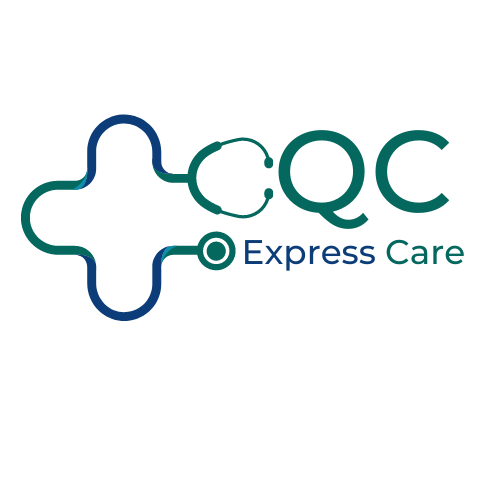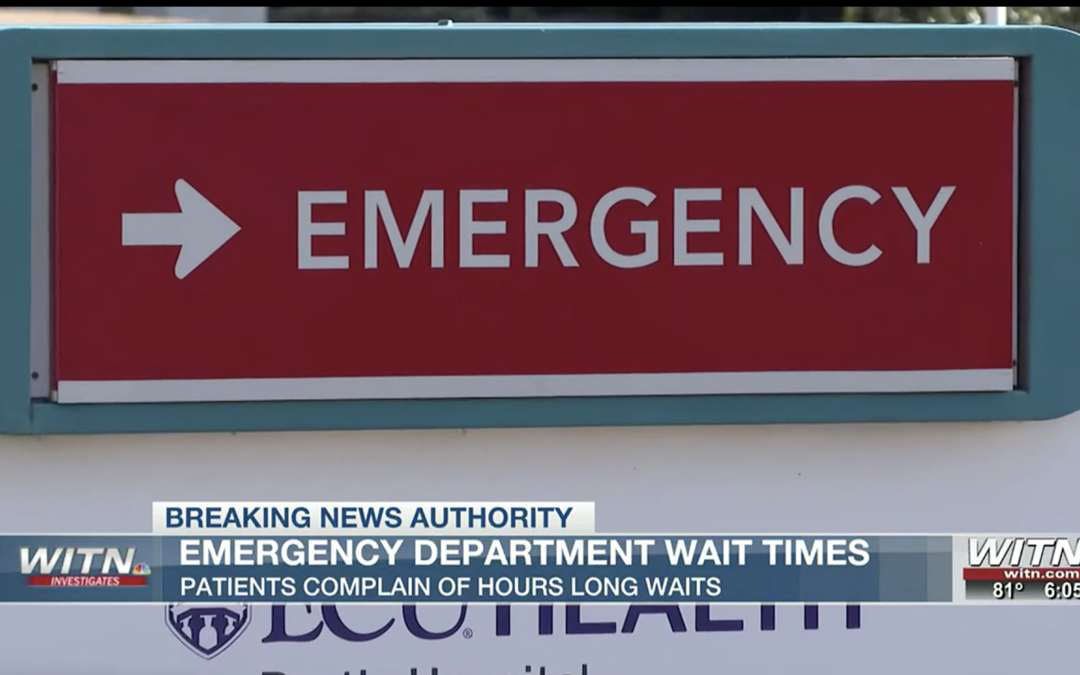By
GREENVILLE, N.C. (WITN) – No one visits an emergency department on a good day, but it’s a necessity for a lot of people. Unfortunately, what can already be an unpleasant trip can turn much, much worse when you factor in the many hours some are spending in waiting rooms.
That problem has only gotten worse recently. Our WITN Investigates dove into these numbers to see why they’re so high and what can be done about it.
When you’re waiting for an available hospital bed, time is often not on your side. As Therman Hoggard quickly found out, it can easily turn into an excruciating wait.
“You’re at the mercy of the hospital because if something happens, you could die right there in the chair,” he said.
Hoggard fell off a ladder while putting up Christmas lights outside his Windsor home in November. He hurt his neck, and after multiple tests indicating nothing was wrong, he was still in severe pain. That’s what brought him to ECU Health’s Greenville emergency department where he says he waited for more than 16 hours before a doctor came to assist.
“You look back at what happened to him and think, this is probably happening to people every day in these big emergency rooms,” said his brother Herman.
He’s right. Their story, while unpleasant, is unsurprising for many, but it’s a hard one to point fingers at when you consider the stress nearly every hospital in the country is under.
Numbers from the Centers for Medicare and Medicaid Services show wait times at ER’s across the country, and while more than 16 hours isn’t the norm, most people are spending significant amounts of time in waiting rooms.
The wait times below apply specifically to emergency department patients who are not admitted or outpatients.
ECU Health’s Greenville location average is four hours and 45 minutes. Even higher – Onslow Memorial has a wait time of a little more than five hours and 12 minutes.
The state average is three hours and 12 minutes.
If a patient needs care immediately – let’s say, for example, they arrive by ambulance, they’ll likely be seen right away. The rest are evaluated based on their condition.
Dr. Leigh Patterson, ECU Health’s Chief of Emergency Services says, “You come in and you’re triaged first by the nurse. There’s a physician in with the triage nurse triaging, doing a secondary work on every patient, and we have started pushing diagnostic tests, laboratory tests and radiology tests, and patients that are waiting are actually getting care.”
For those who have to wait, ECU Health Chief Operating Officer Brian Floyd said they’re facing demand like never before.
“Our emergency department, our hospital is full. We have over 1,000 patients a day which is a record for our hospital in its history,” Floyd said.
It’s not just a matter of more people needing care. As Dr. Patterson, explains – their needs are more serious in part because of Covid-19.
“They are sicker coming to the ED than they were certainly before the pandemic,” Patterson said. “The chronic conditions are much more advanced, the diabetes is much further advanced, the STEMI’s, the strokes, the pulmonary emboli,” explained Patterson. “There’s just more of those really sick patients relative to the total number of patients who arrive on a daily basis relative to what we saw before the pandemic.”
Add to that, the fact that hospital staff are leaving in droves, with a Forbes survey showing 47% of U.S. healthcare workers, plan to leave their current role by 2025.
“I think there’s a need for more staff everywhere in healthcare,” Patterson said.
The specifics of that need, though, weren’t provided. When asked for numbers, ECU health officials only said that all beds in the emergency department are “fully staffed and operational.”
So what is the solution? It’s, of course, not a simple answer, but Floyd feels it starts with expanding access.
“Sometimes, care backs up in emergency departments because it wasn’t already rendered earlier when the need wasn’t as great,” said Floyd. “And so that’s why we’re proponents for things like Medicaid expansion because it allows people in poorer communities to have access, to have a way to get that healthcare that they need. It also allows there to be the funding when they need that healthcare to allow infrastructure to be built in those communities.”
It seems a bit contradictory, though, when you factor in the five locations ECU Health plans to close – most of which serve rural areas – due to a loss of $46 million dollars. ECU Health said that while it’s optimistic Medicaid expansion or other helpful programs may happen later this year – it has to act now with difficult decisions to “keep its operations optimized.“
Officials wouldn’t say outright though if Medicaid expansion would have prevented the closure of these facilities.
Unfortunately, there doesn’t seem to be an immediate solution, which leaves vulnerable patients in a difficult position.
“They all took an oath to take care and not do harm, and unfortunately I think sometimes they’re still doing harm,” Herman said.
Another layer of this is the fact that people often come to the emergency department because it’s their only means of getting care. While that’s something healthcare professionals understand, they also ask everyone to be mindful of whether their issue is an emergency or something that can be addressed at an urgent care facility or during an appointment.
Little to no wait time!
Source: https://www.witn.com/2023/02/23/witn-investigates-closer-look-ed-wait-times-east/

